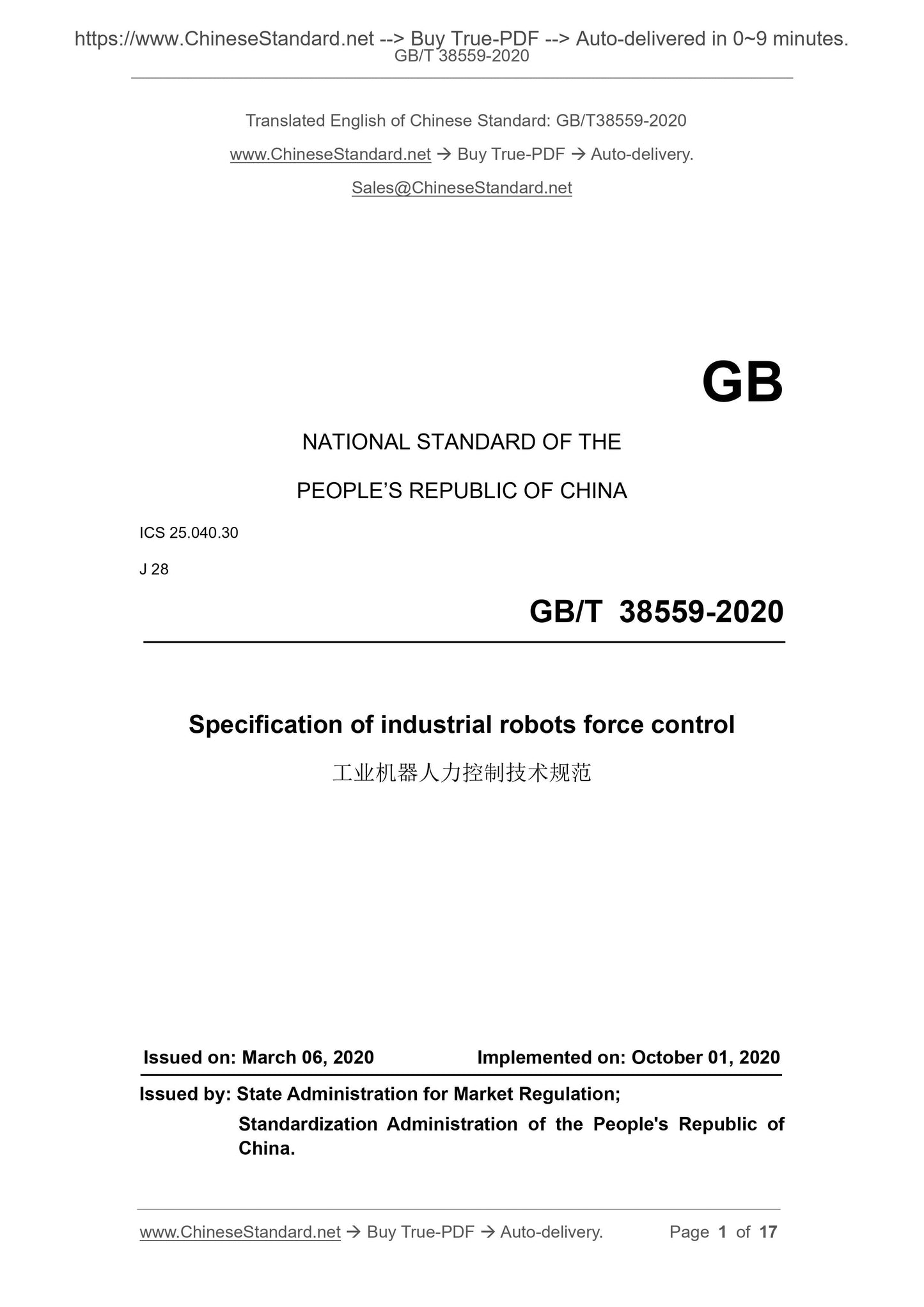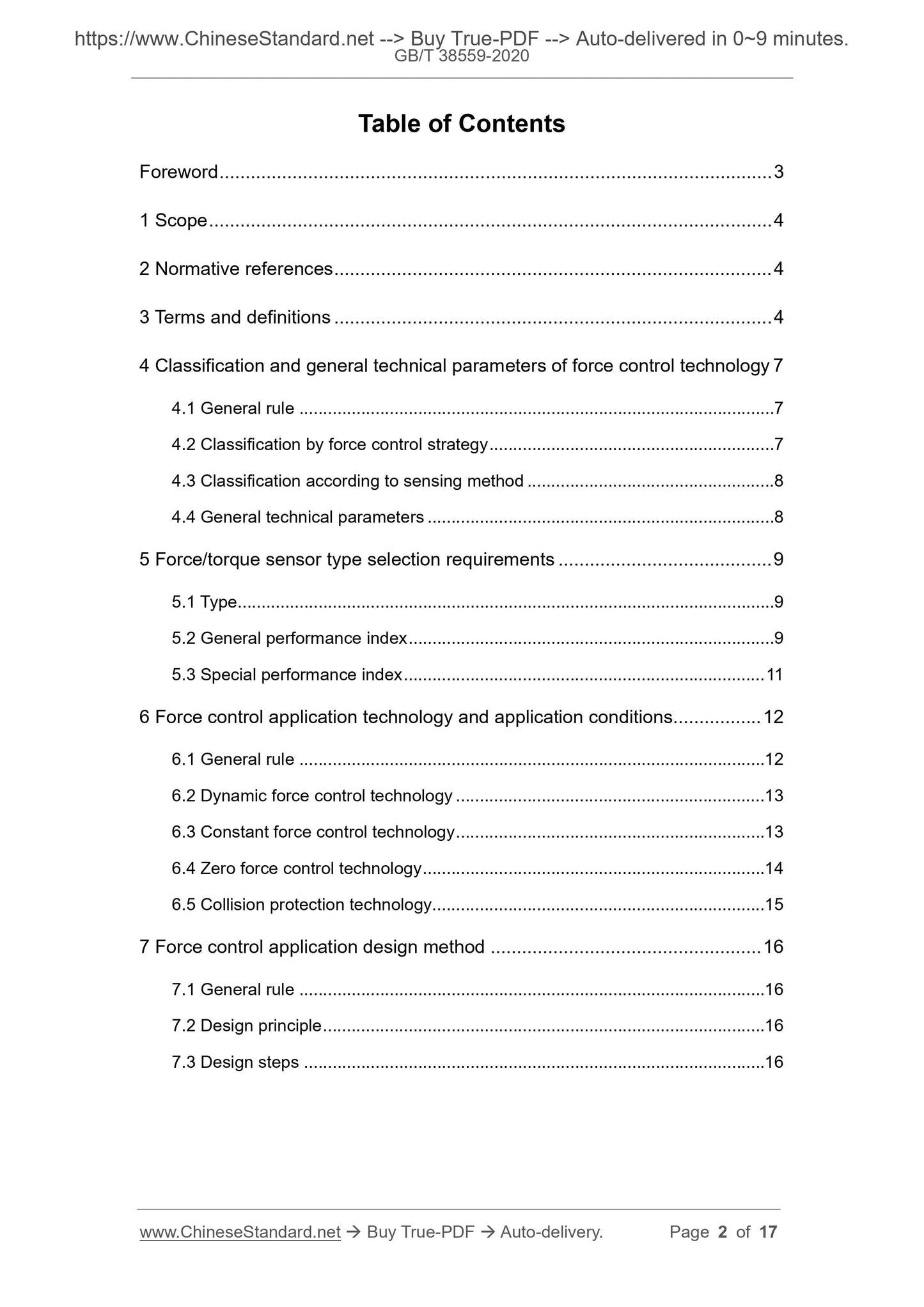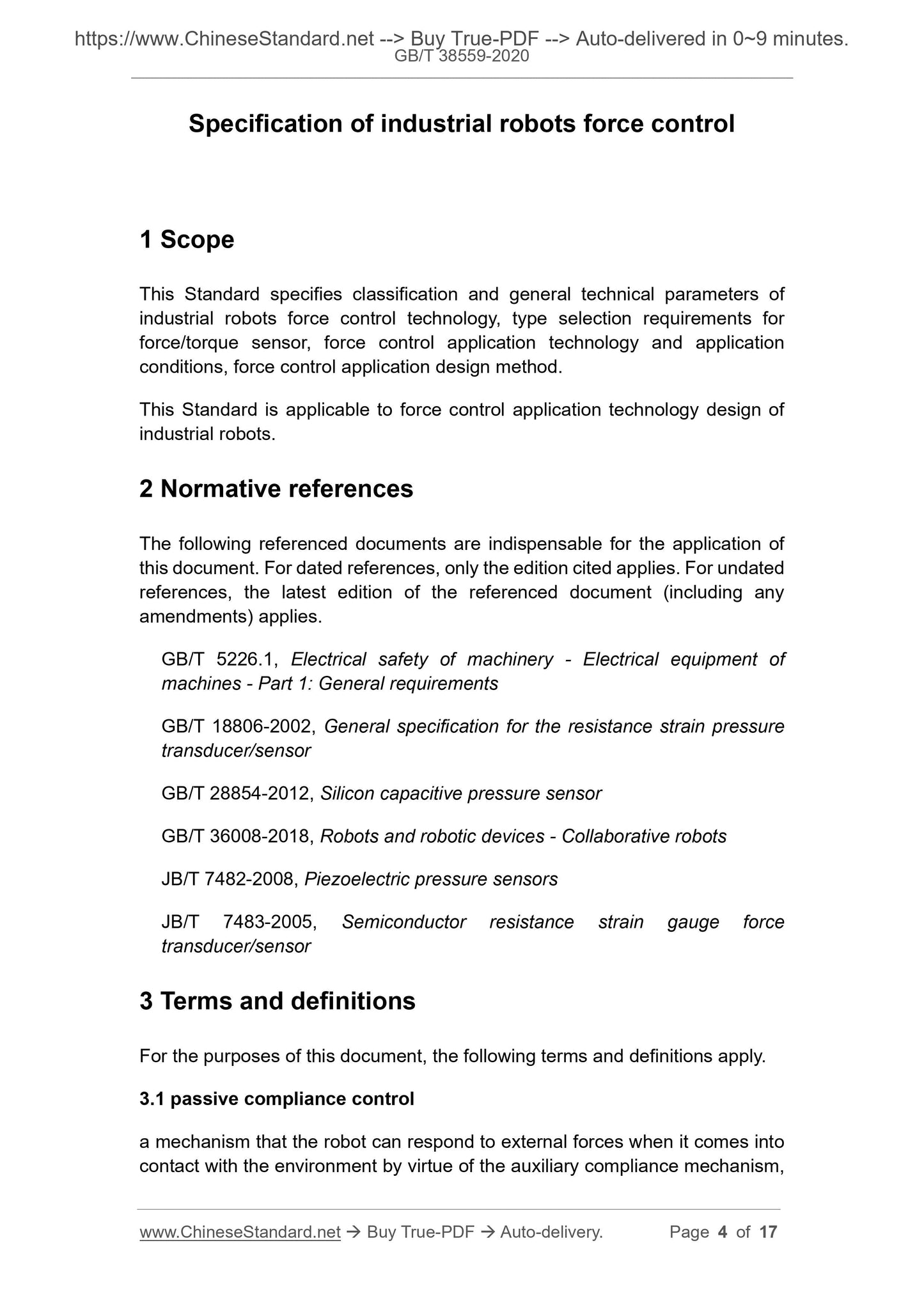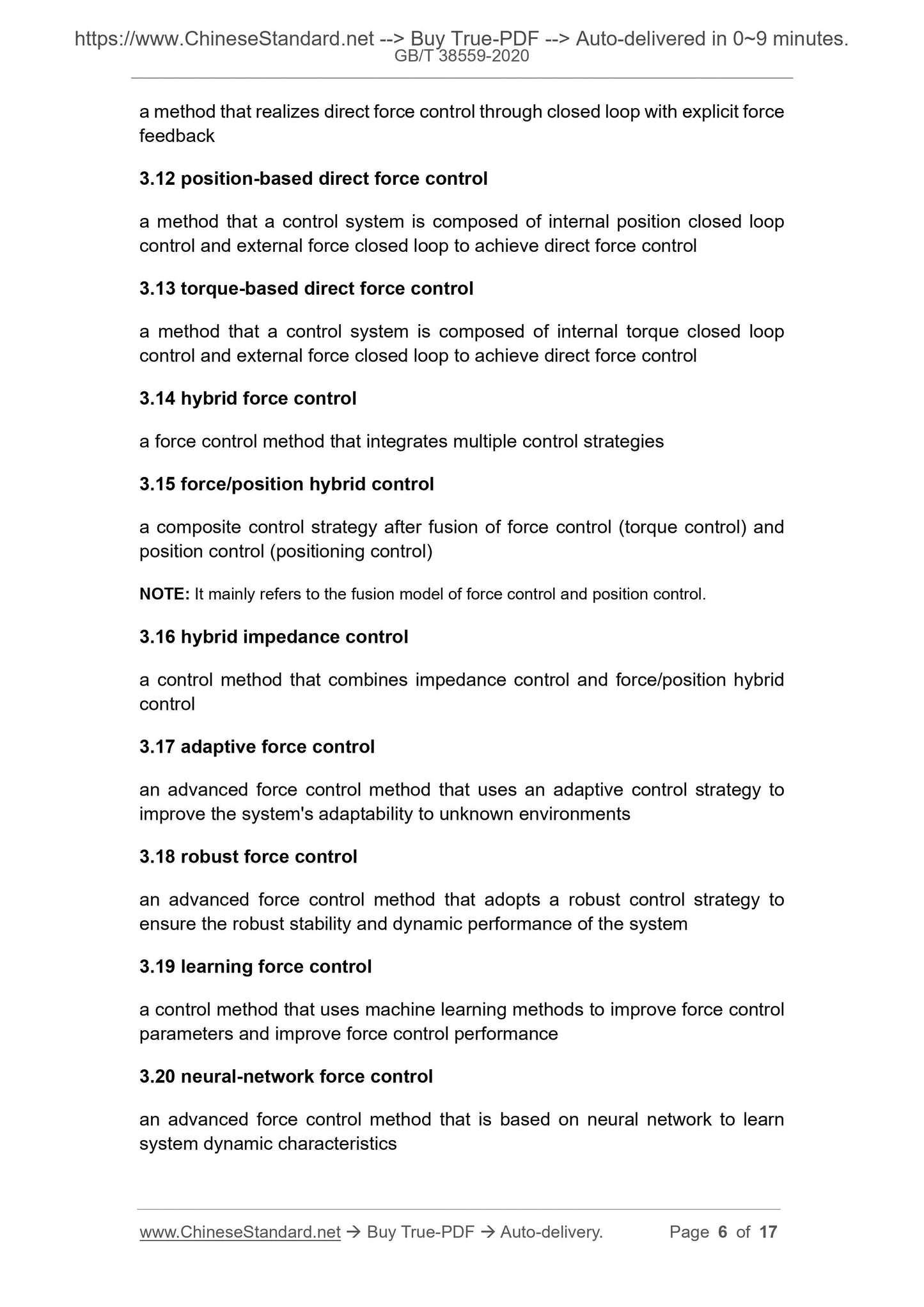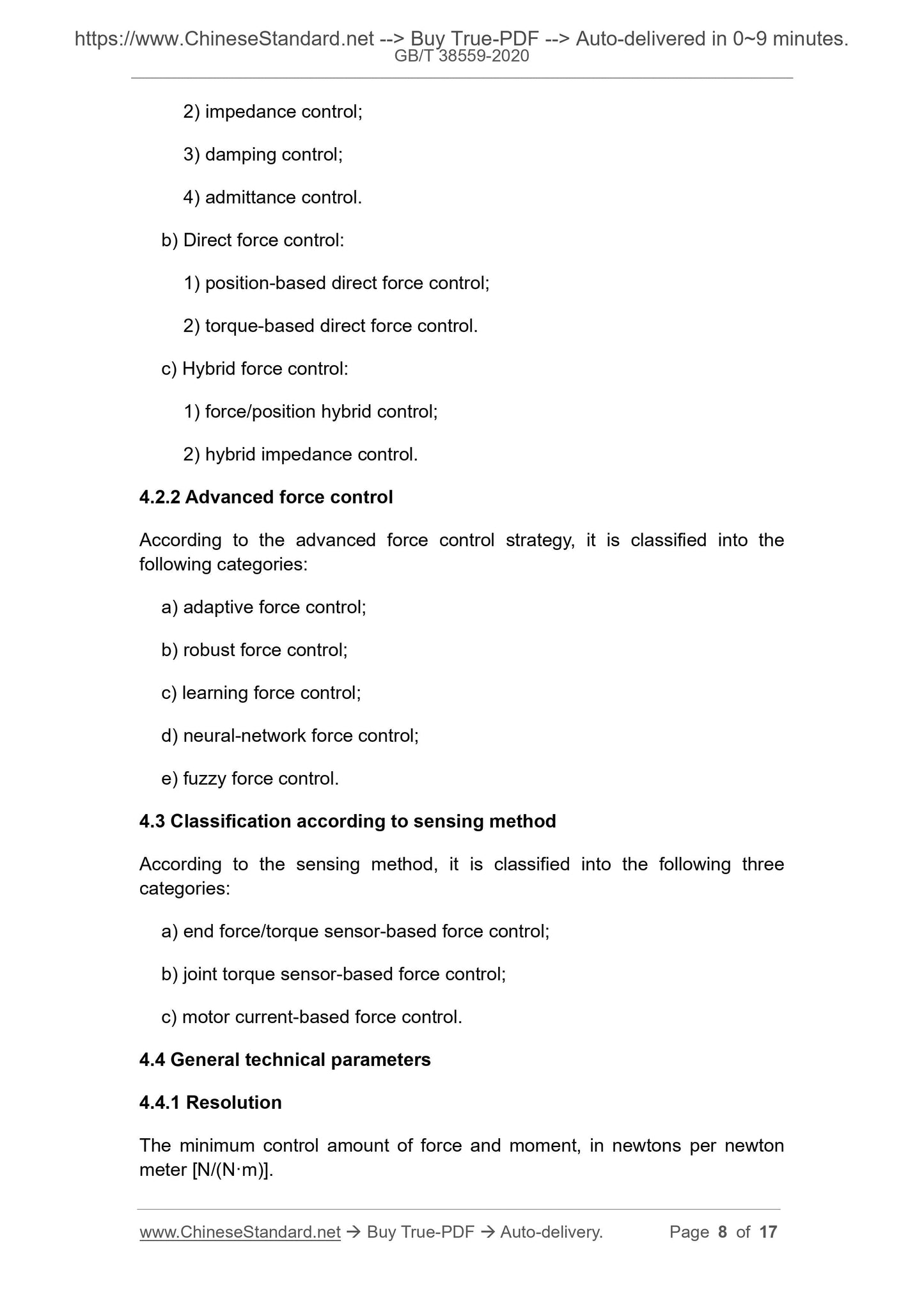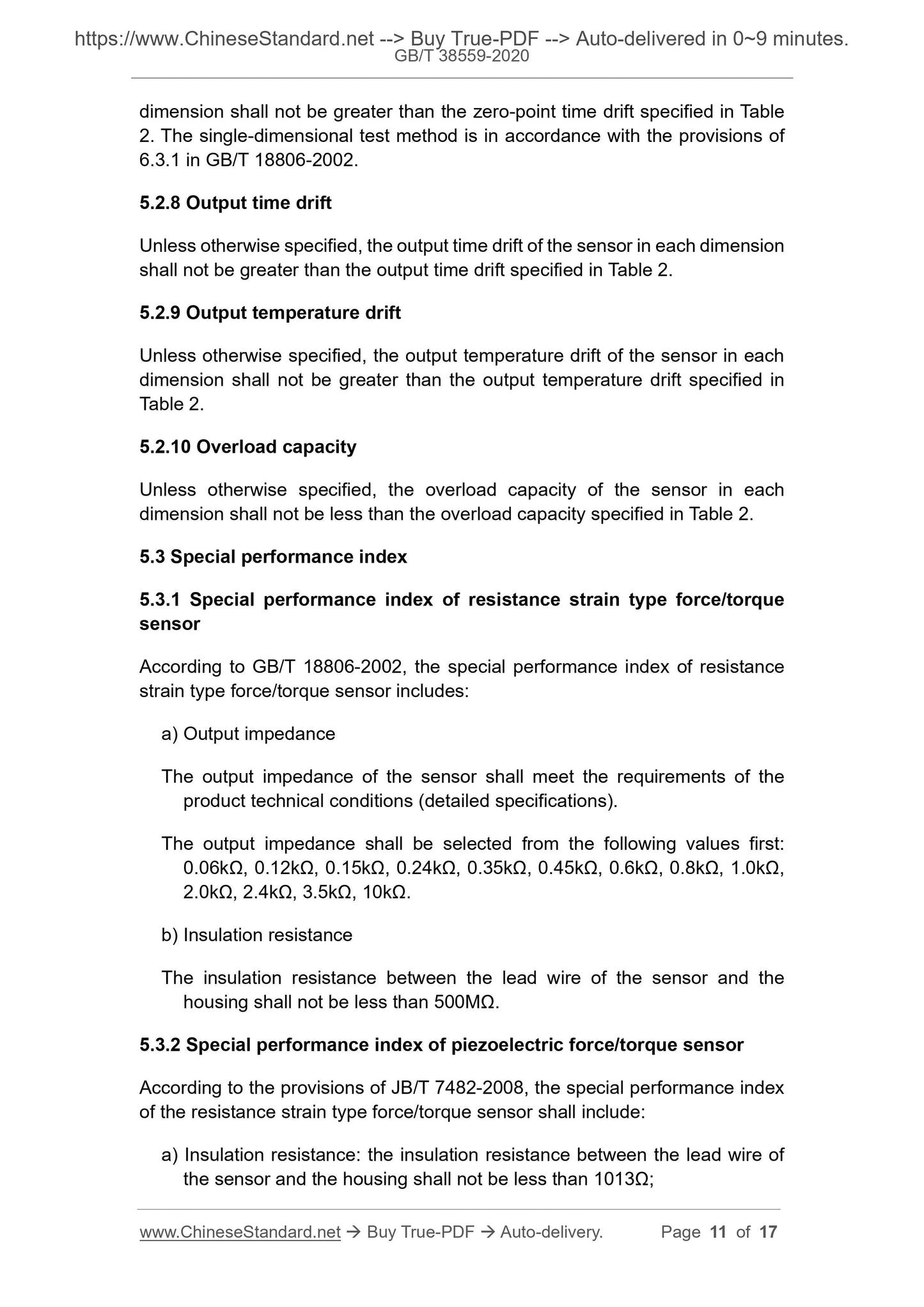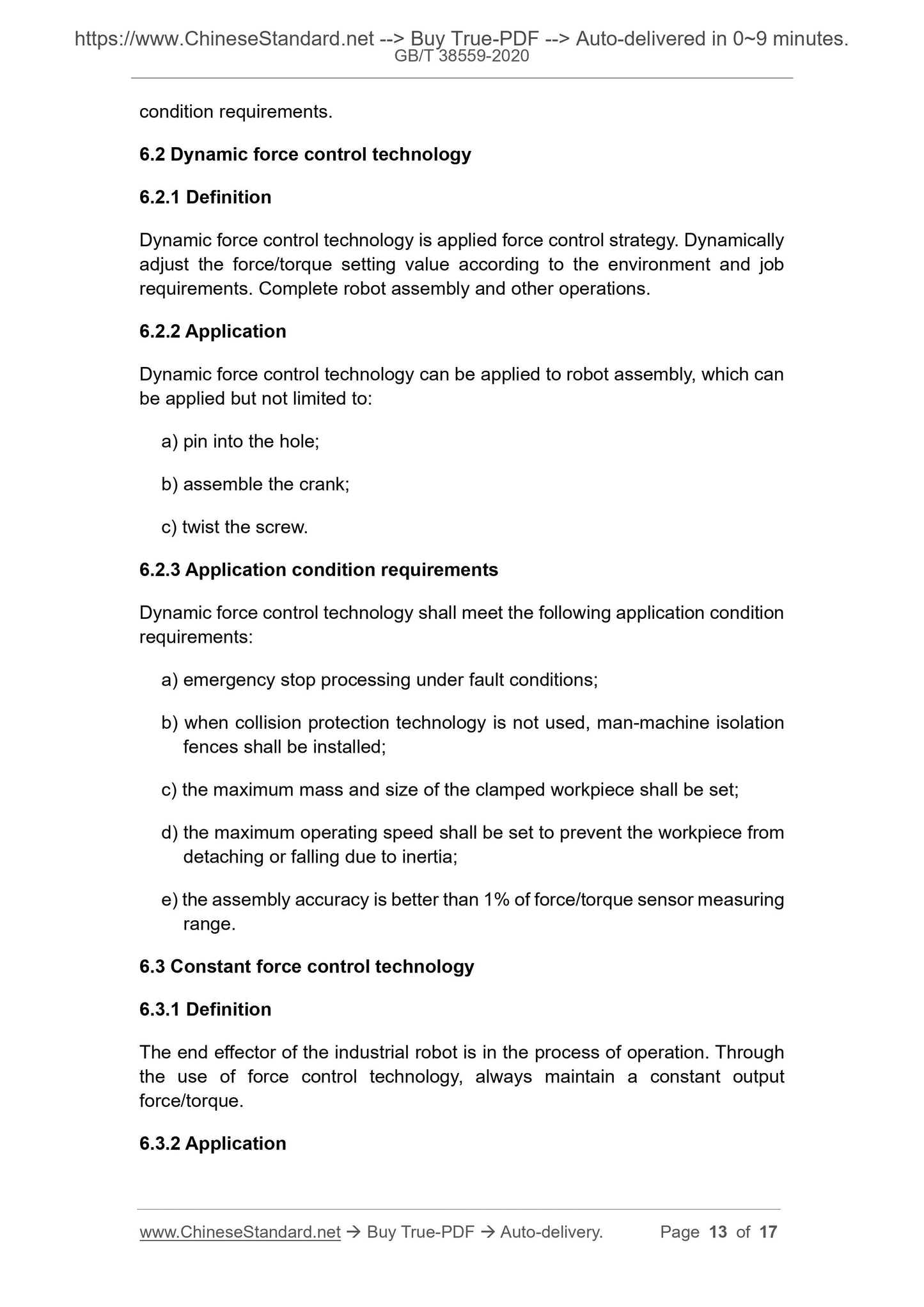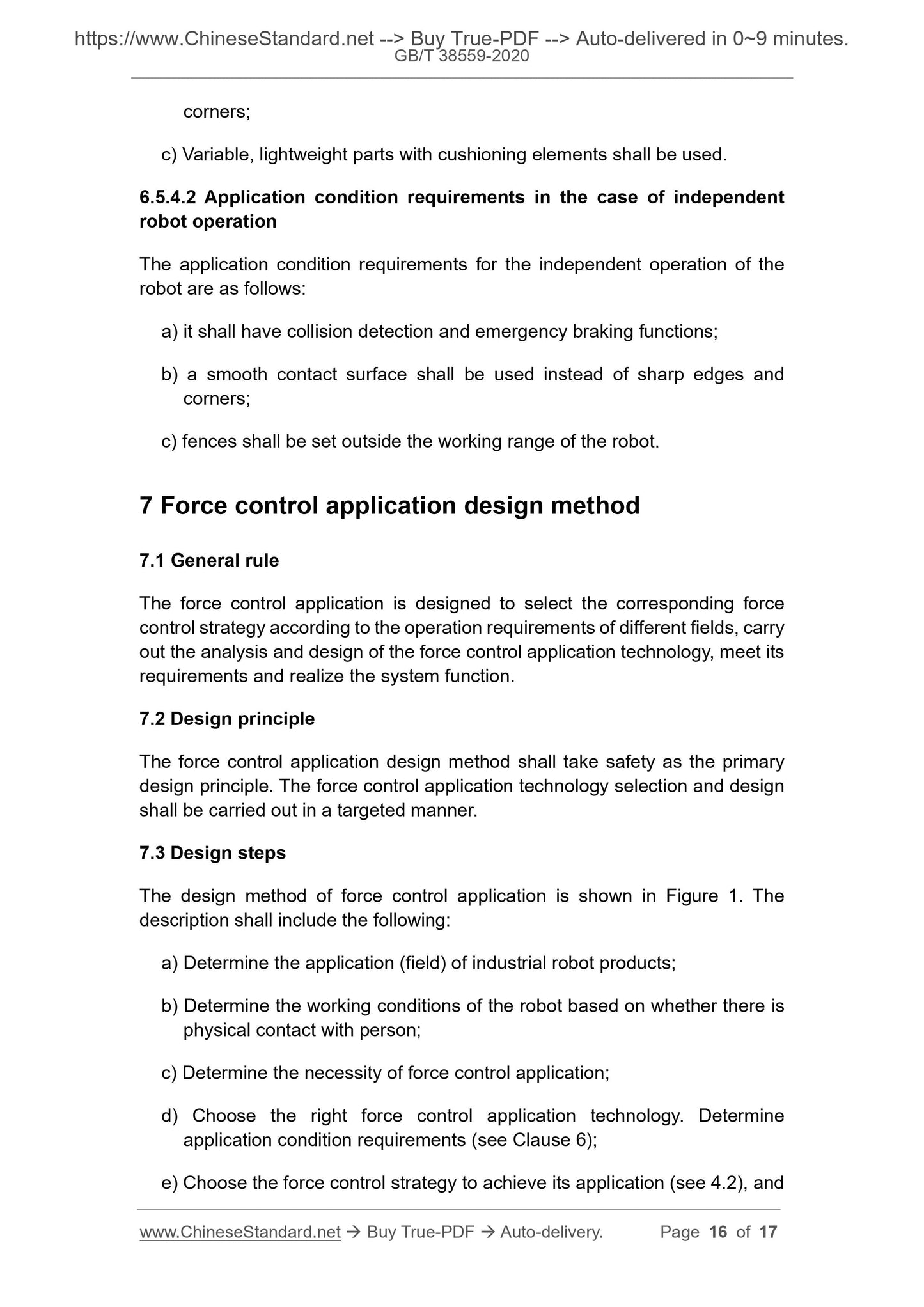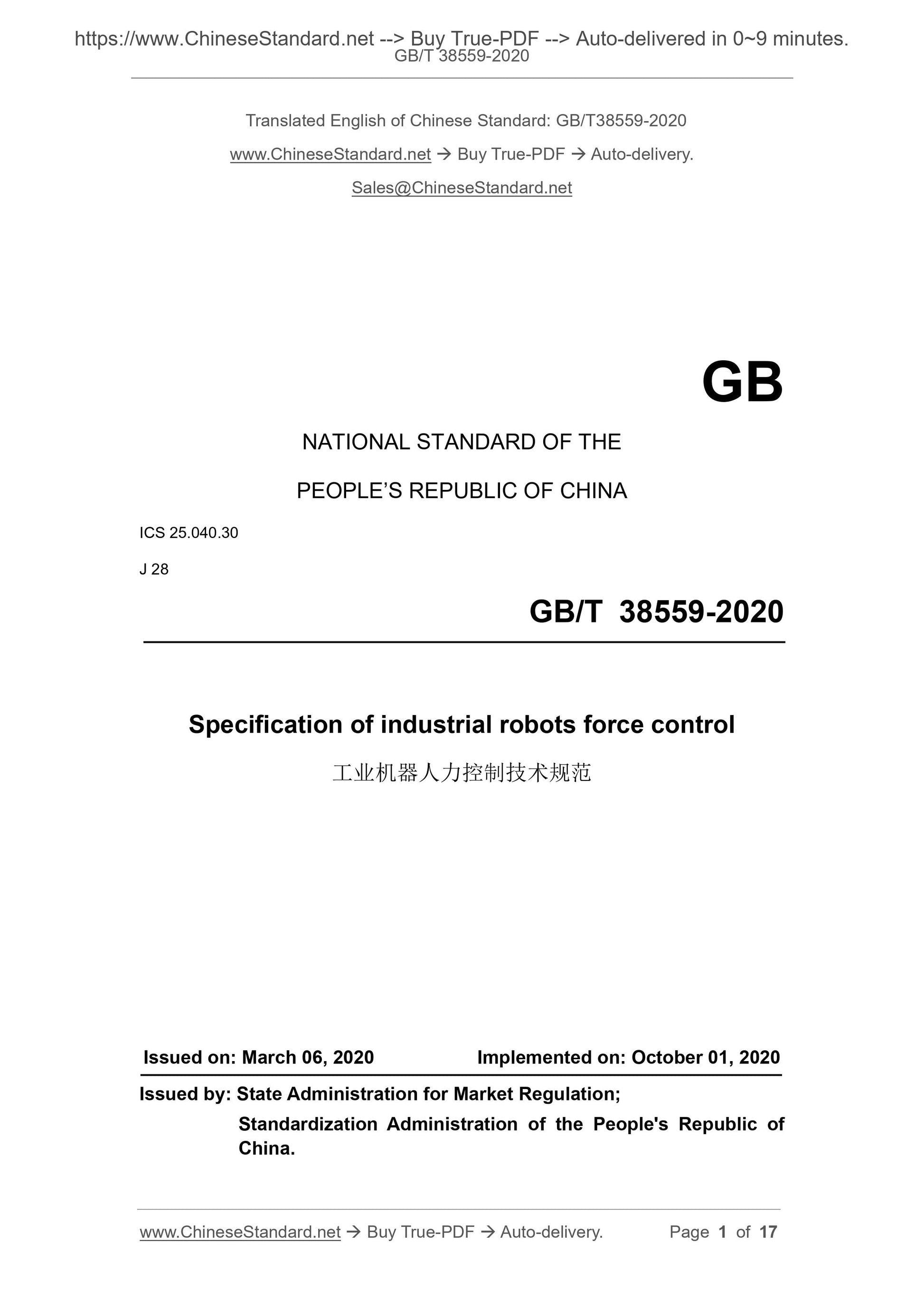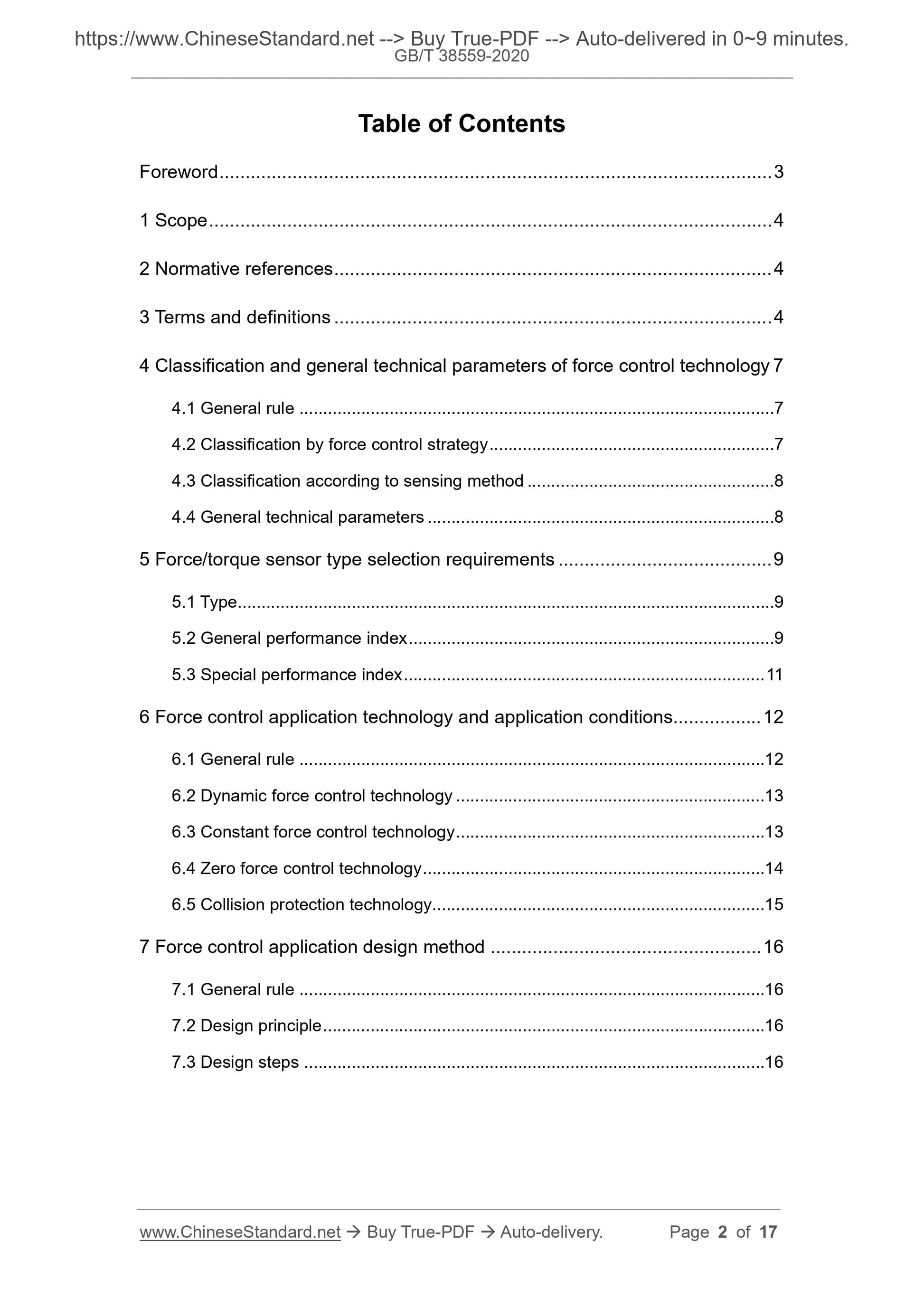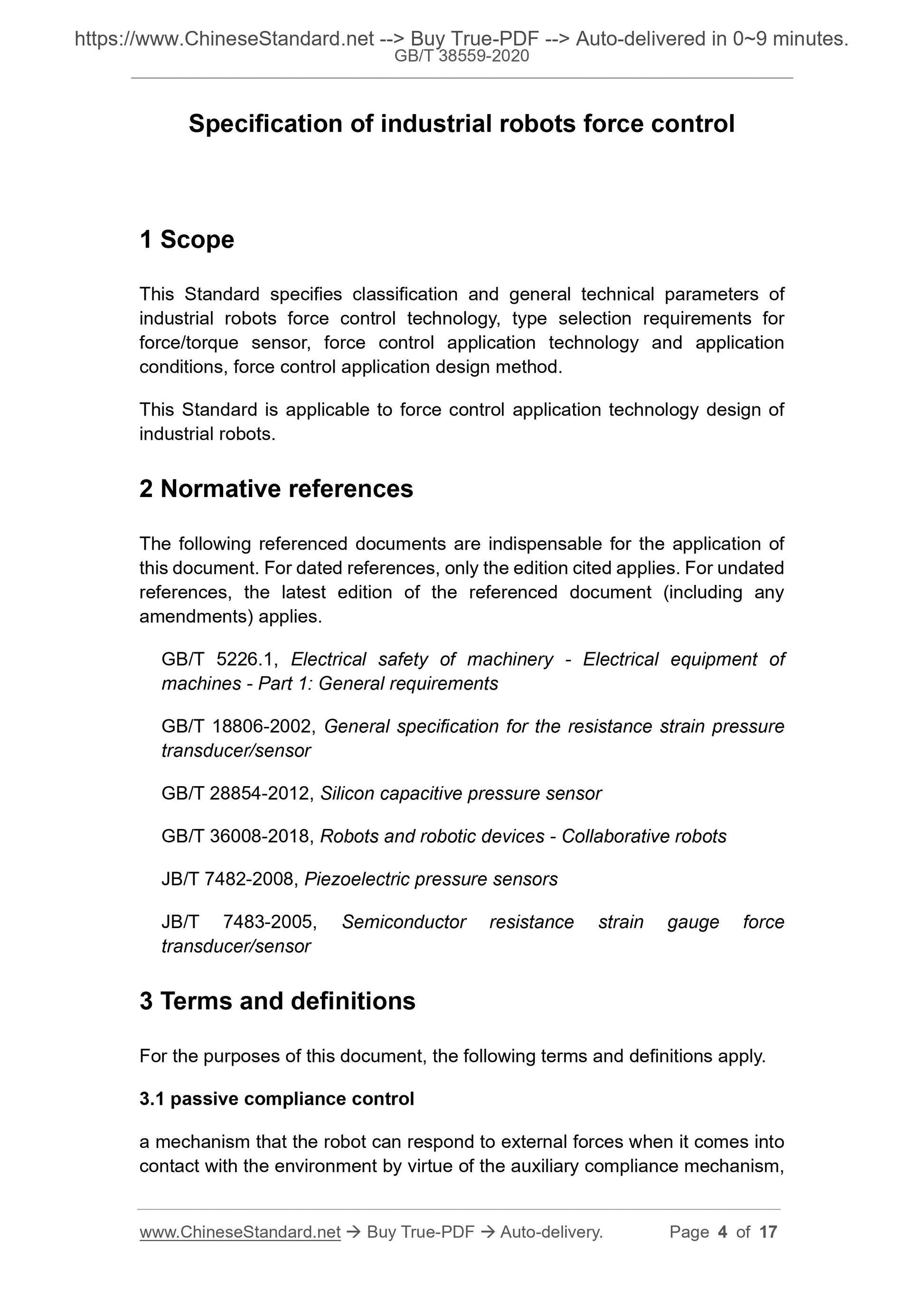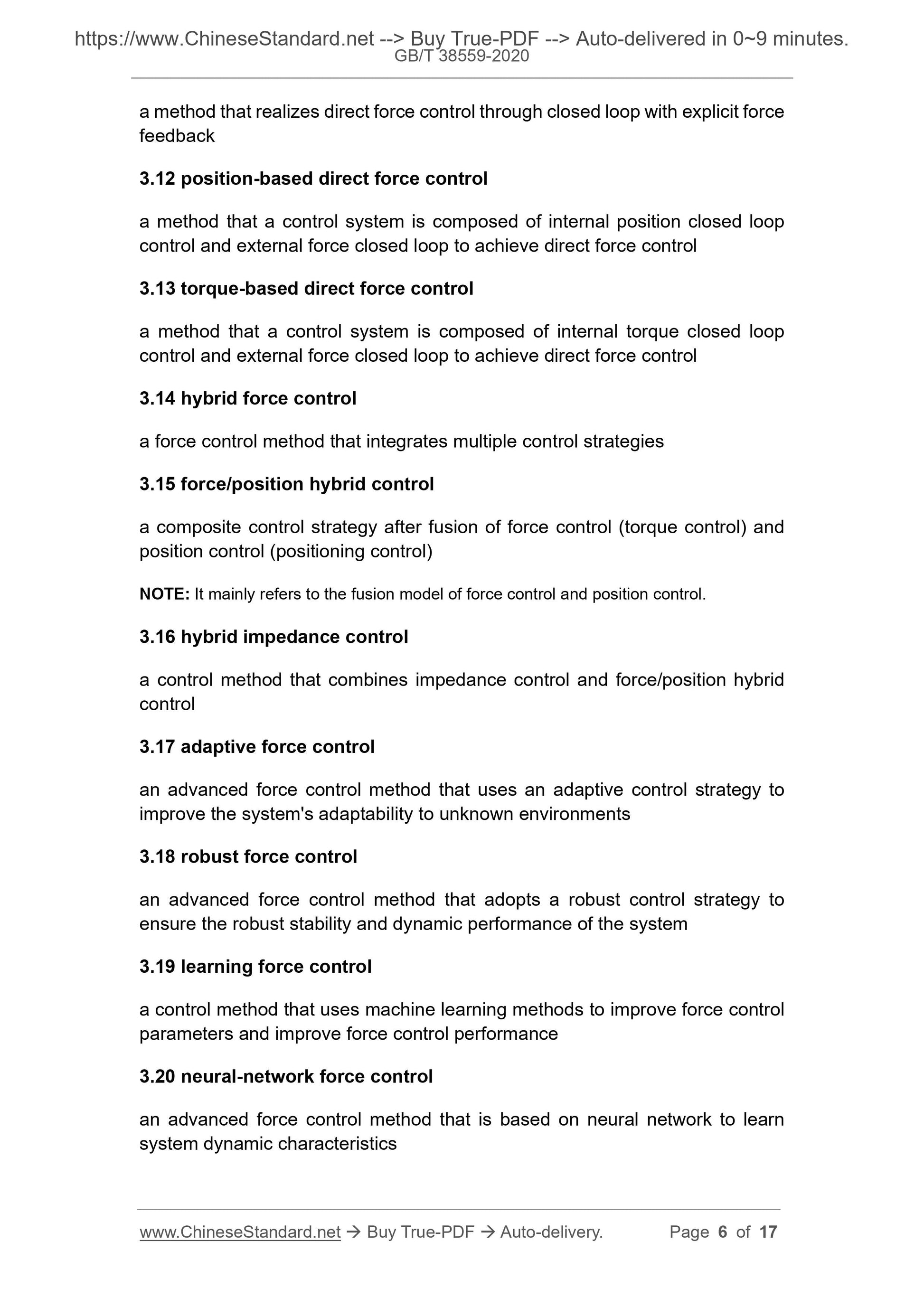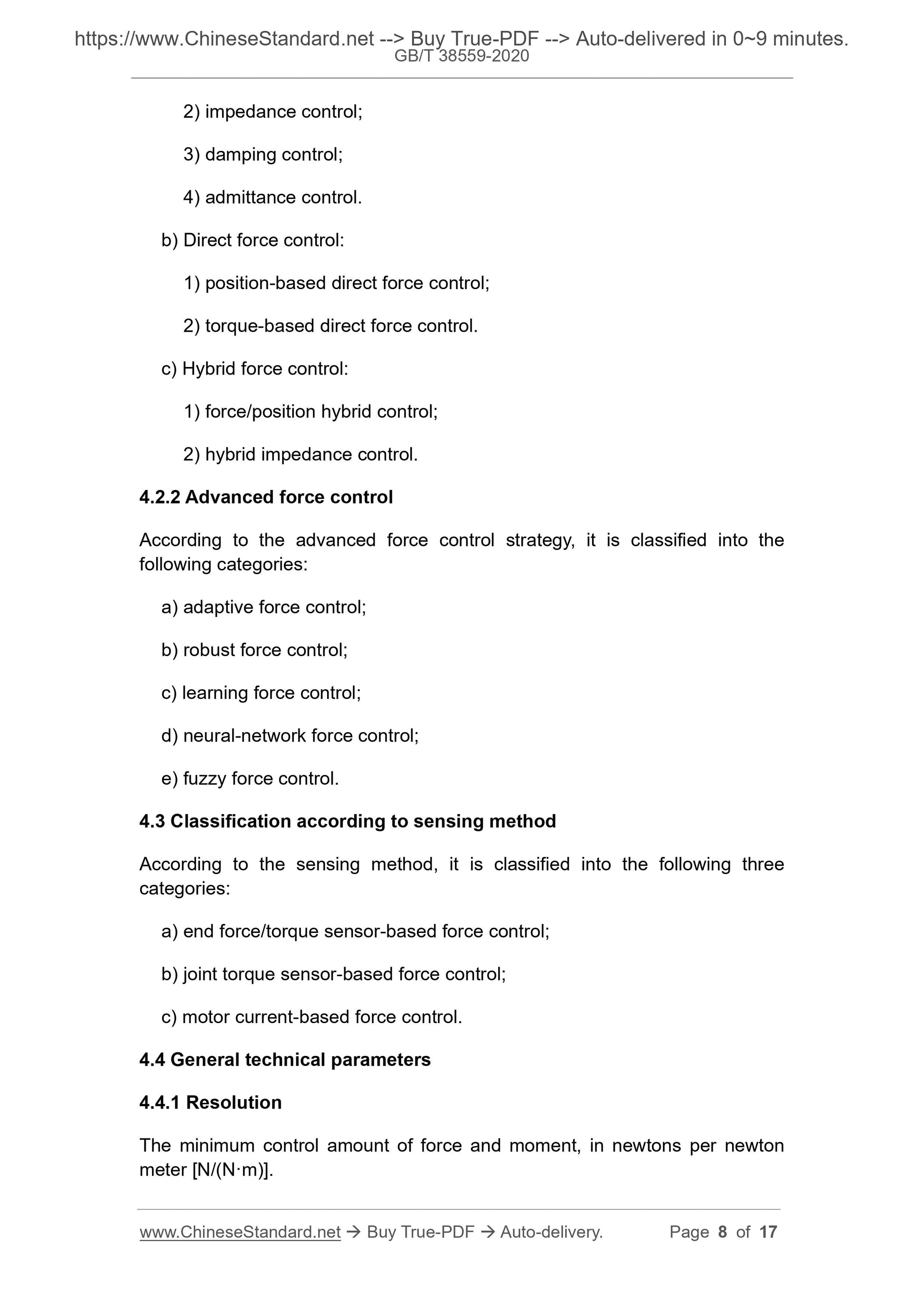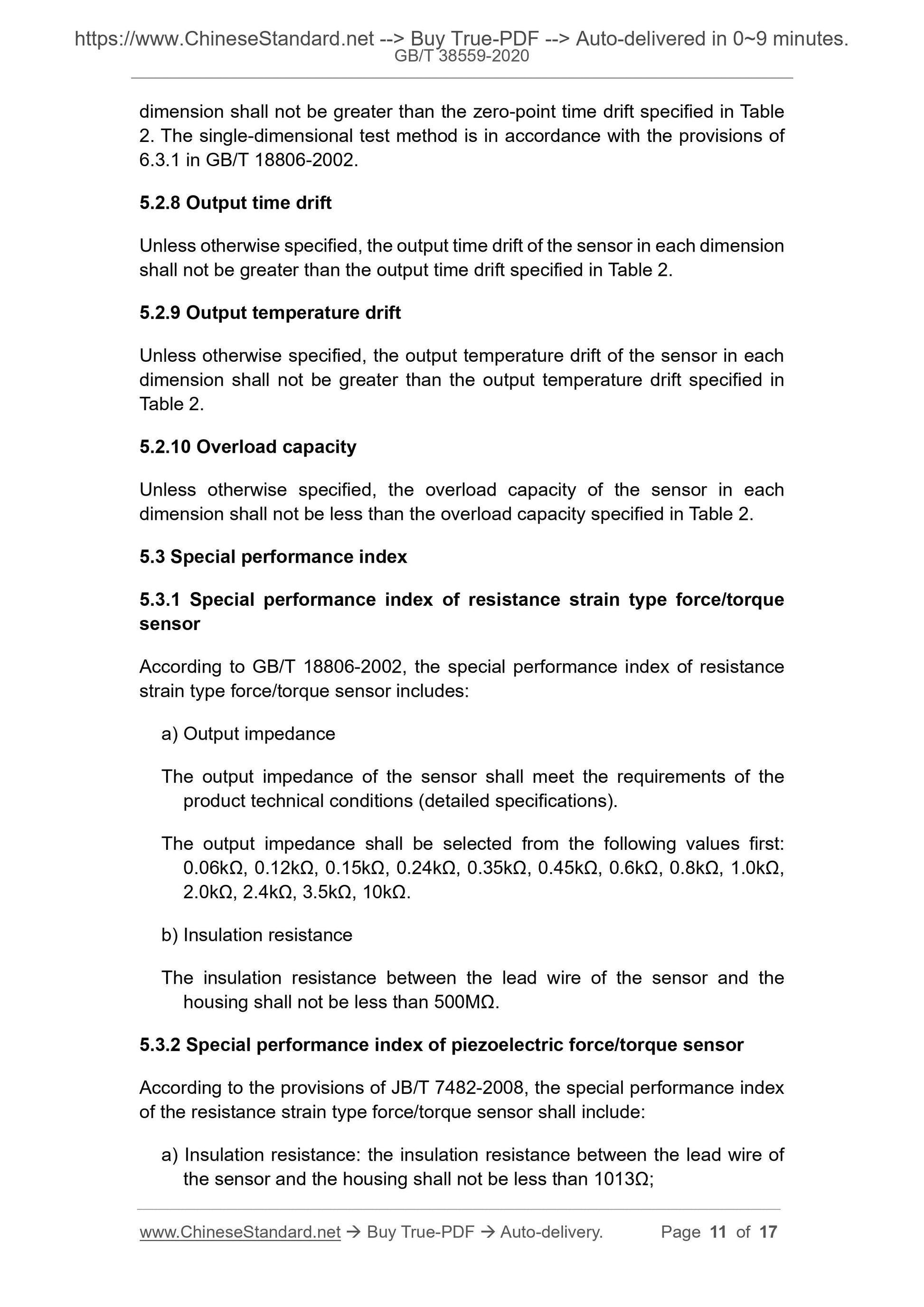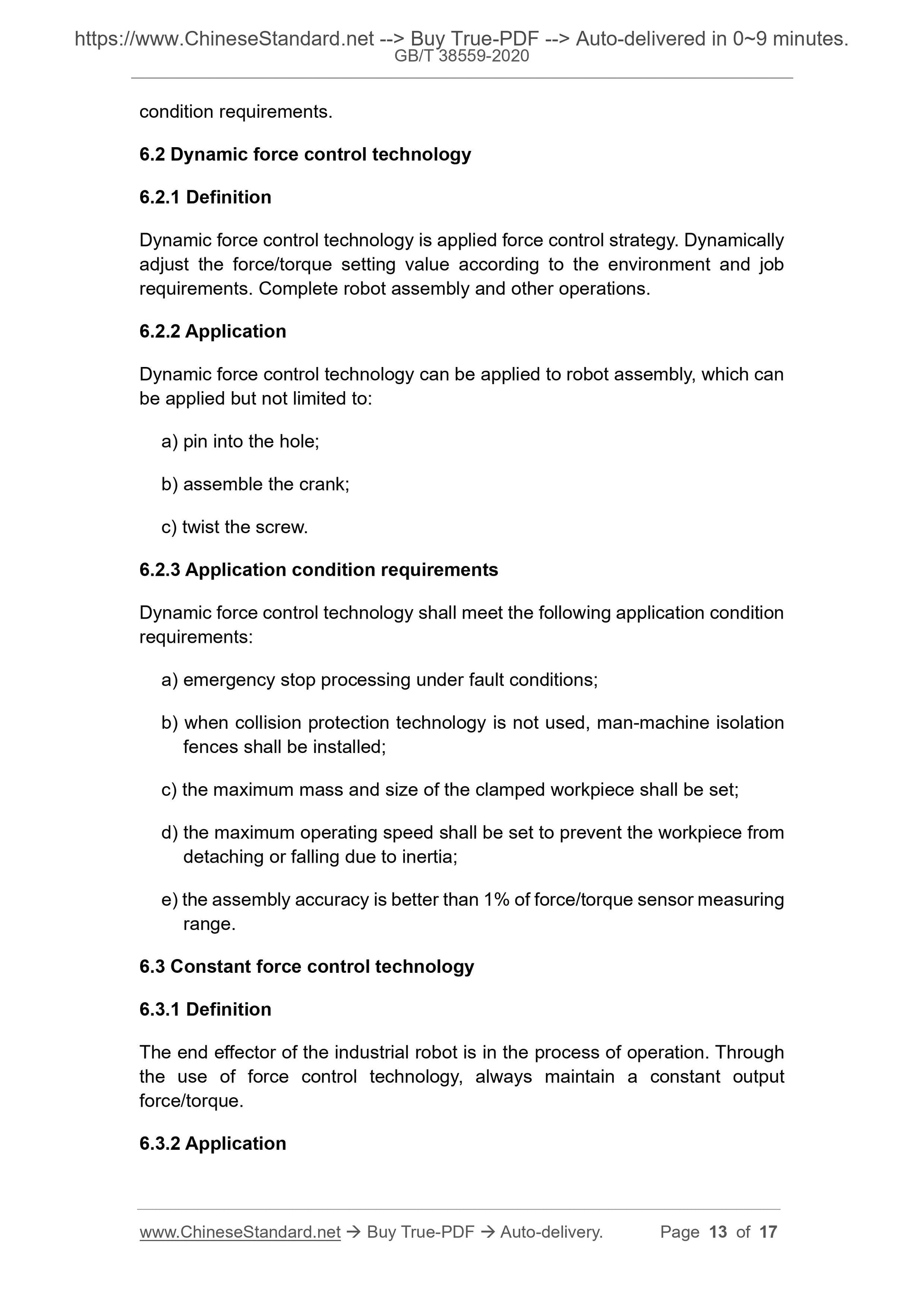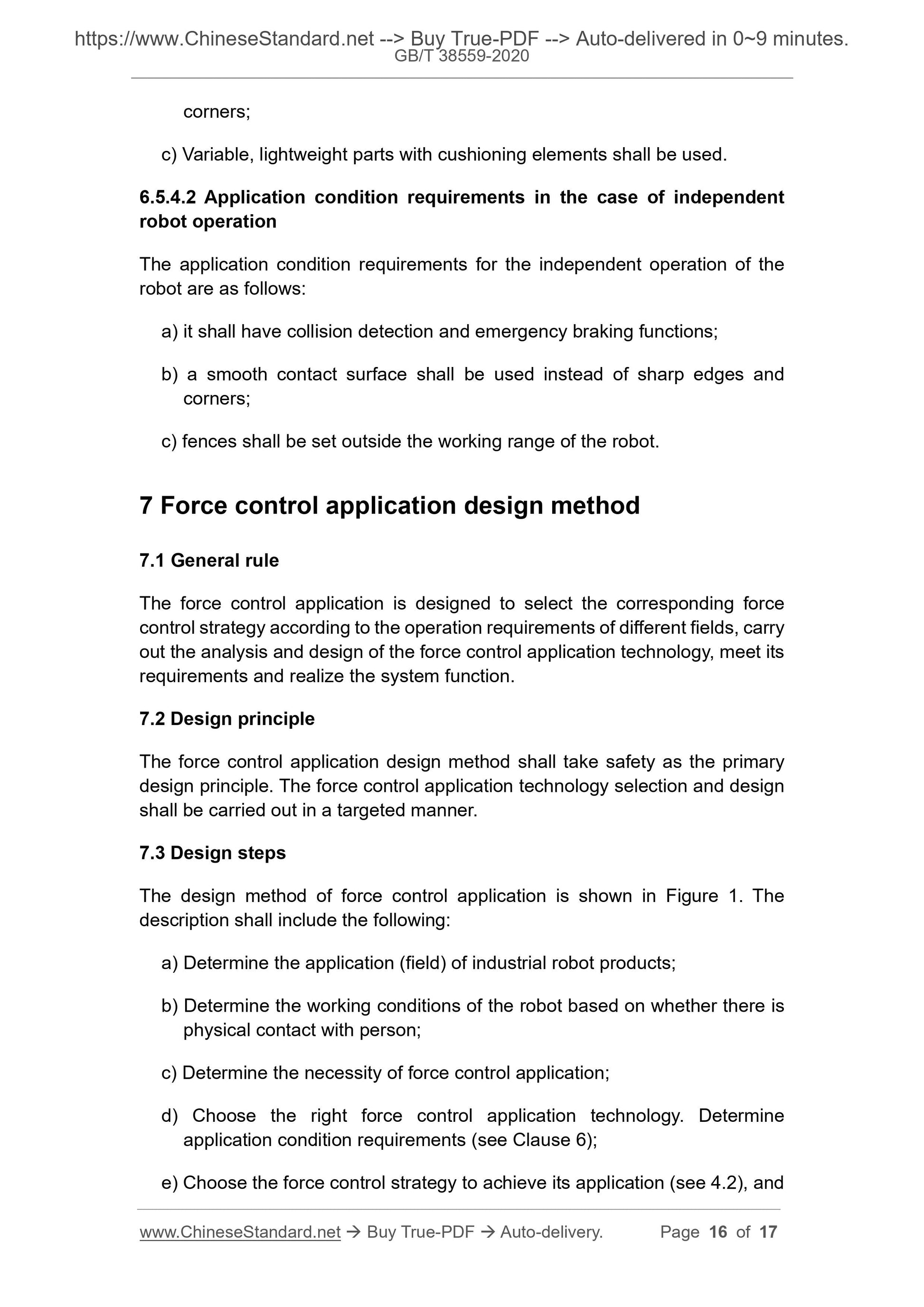1
/
of
8
www.ChineseStandard.us -- Field Test Asia Pte. Ltd.
GB/T 38559-2020 English PDF (GB/T38559-2020)
GB/T 38559-2020 English PDF (GB/T38559-2020)
Regular price
$205.00
Regular price
Sale price
$205.00
Unit price
/
per
Shipping calculated at checkout.
Couldn't load pickup availability
GB/T 38559-2020: Specification of industrial robots force control
Delivery: 9 seconds. Download (and Email) true-PDF + Invoice.Get Quotation: Click GB/T 38559-2020 (Self-service in 1-minute)
Newer / historical versions: GB/T 38559-2020
Preview True-PDF
Scope
This Standard specifies classification and general technical parameters ofindustrial robots force control technology, type selection requirements for
force/torque sensor, force control application technology and application
conditions, force control application design method.
This Standard is applicable to force control application technology design of
industrial robots.
Basic Data
| Standard ID | GB/T 38559-2020 (GB/T38559-2020) |
| Description (Translated English) | Specification of industrial robots force control |
| Sector / Industry | National Standard (Recommended) |
| Classification of Chinese Standard | J28 |
| Classification of International Standard | 25.040.30 |
| Word Count Estimation | 14,155 |
| Date of Issue | 2020-03-06 |
| Date of Implementation | 2020-10-01 |
| Quoted Standard | GB/T 5226.1; GB/T 18806-2002; GB/T 28854-2012; GB/T 36008-2018; JB/T 7482-2008; JB/T 7483-2005 |
| Issuing agency(ies) | State Administration for Market Regulation, China National Standardization Administration |
| Summary | This standard specifies the industrial robot force control technology classification and general technical parameters, force/torque sensor selection requirements, force control application technology and application conditions and force control application design method. This standard applies to the technical design of force control applications for industrial robots. |
Share
